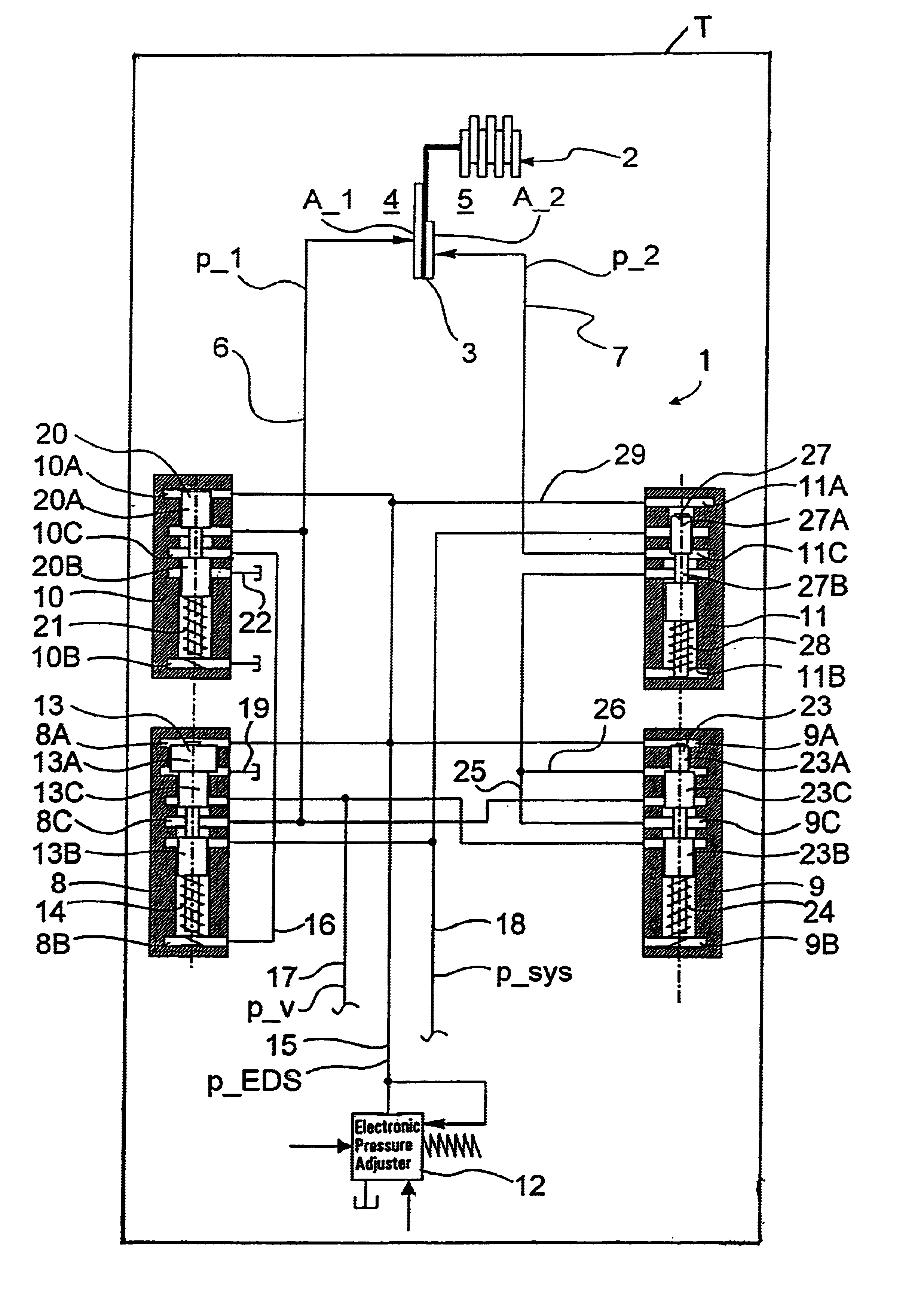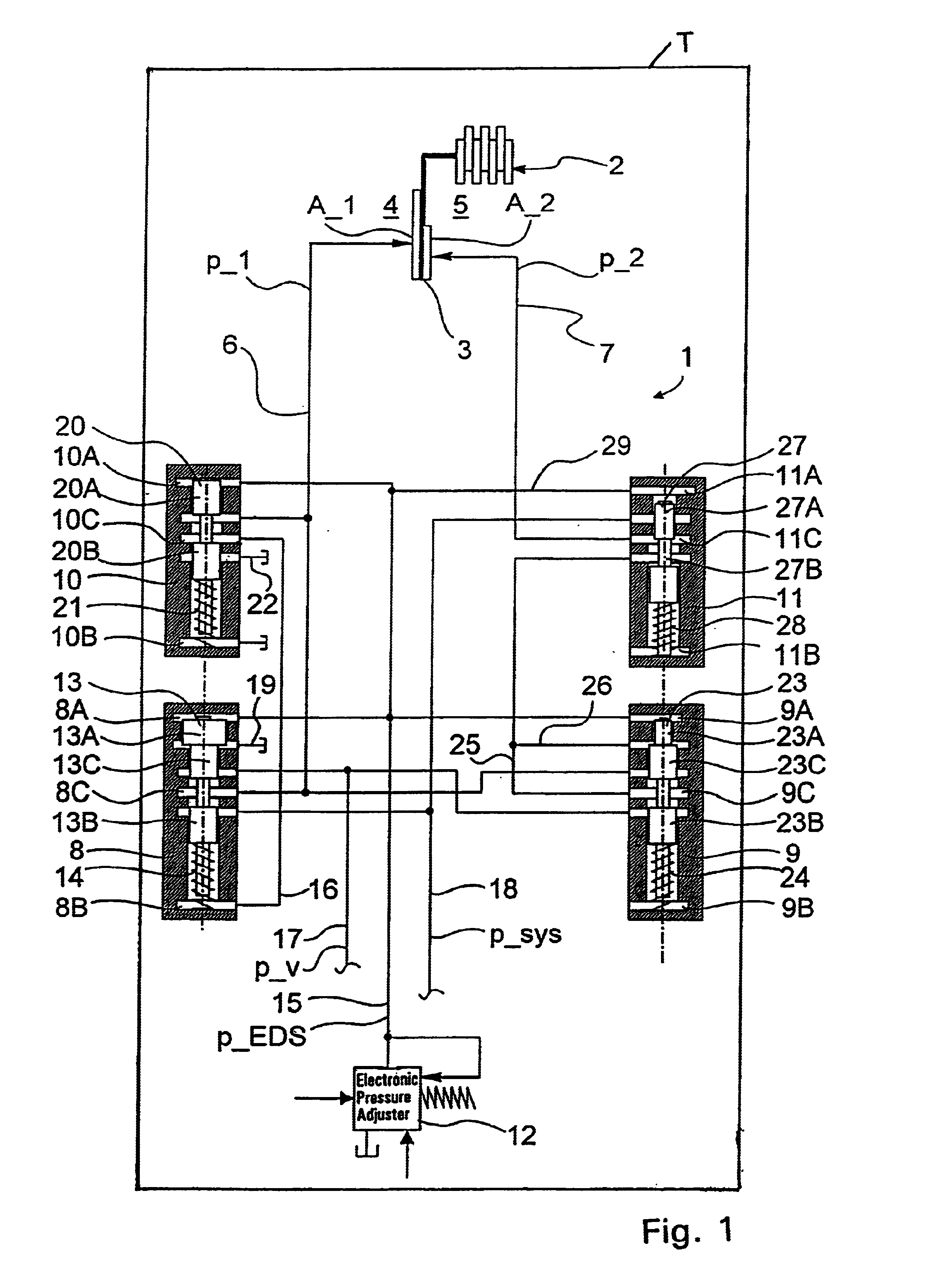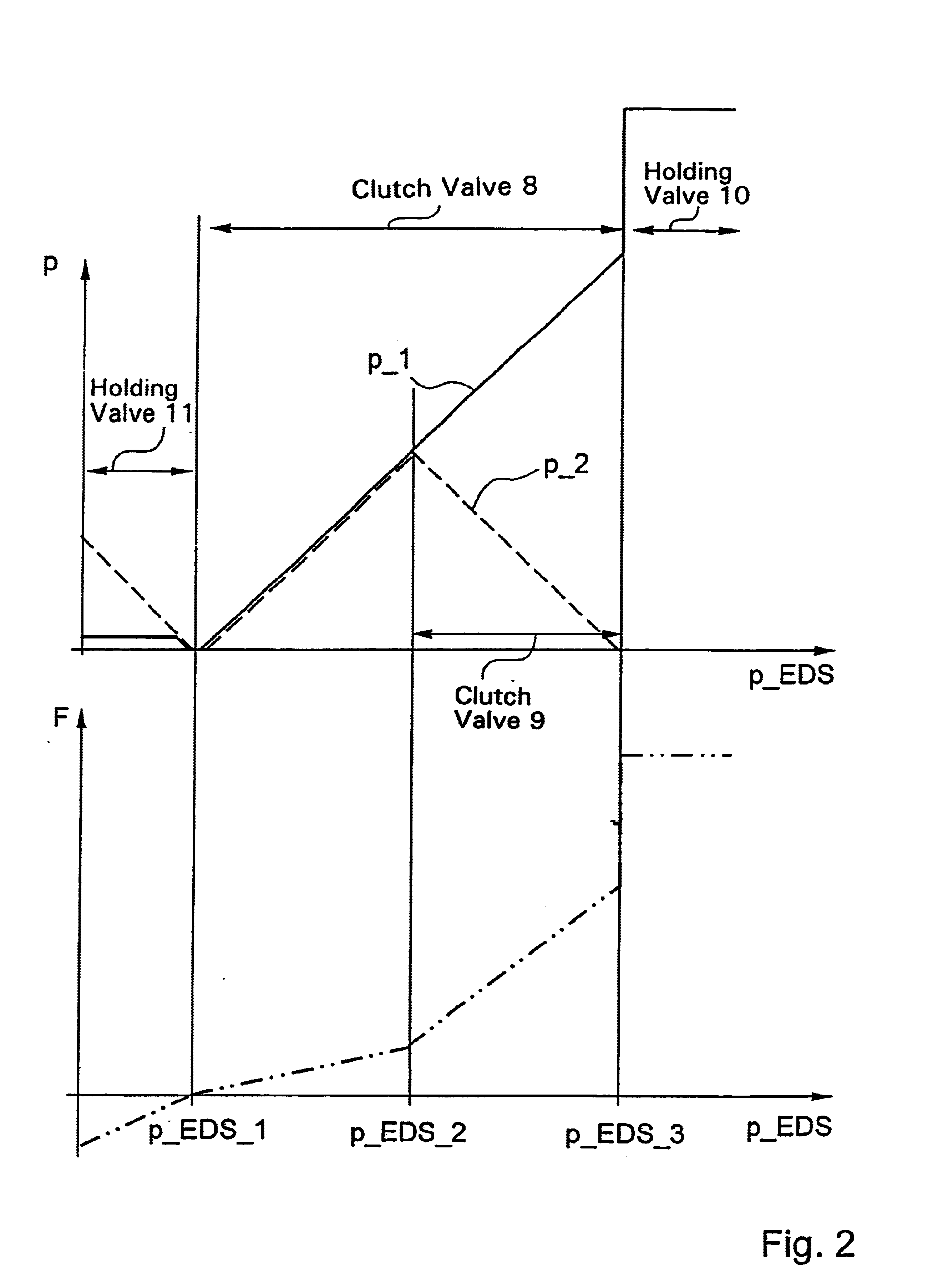Device for control of a hydraulically actuatable shifting element
a technology of hydraulic actuation and shifting element, which is applied in the direction of mechanical actuation clutches, interengaging clutches, and pressure pre-control valves customarily used as actuators. it can solve the problems of reducing the utilizable control range of the actuator, and reducing the number of actuators and structural elements. , the effect of less limitation of transmitting capacity
- Summary
- Abstract
- Description
- Claims
- Application Information
AI Technical Summary
Benefits of technology
Problems solved by technology
Method used
Image
Examples
Embodiment Construction
[0030]Referring to FIG. 1 and FIG. 3, respectively, they show a device 1, 1′ for control of a hydraulically actuatable clutch 2 designed as a multi-disc clutch of a powershift transmission T of a motor vehicle.
[0031]The clutch 2 has a clutch piston 3, only symbolically shown in the figures, which is displaceably movable in a cylinder (not shown in detail), and which defines, with a first surface A_1, a piston space 4 pressurizable with hydraulic medium, and with a second surface A_2 lying opposite and of smaller size a reset space 5. The piston space 4 and the reset space 5 are symbolically indicated in FIG. 1 and FIG. 3 by the reference numerals thereof.
[0032]To actuate the clutch 2, the piston space 4 can be pressurized with a hydraulic medium, as a pressure medium which, via a line 6, can be passed thereinto with a pressure p_1 and again removed therefrom. To move the clutch piston 3 from a shifting position back to an idle position, one hydraulic reset device is provided in a ma...
PUM
 Login to View More
Login to View More Abstract
Description
Claims
Application Information
 Login to View More
Login to View More - R&D
- Intellectual Property
- Life Sciences
- Materials
- Tech Scout
- Unparalleled Data Quality
- Higher Quality Content
- 60% Fewer Hallucinations
Browse by: Latest US Patents, China's latest patents, Technical Efficacy Thesaurus, Application Domain, Technology Topic, Popular Technical Reports.
© 2025 PatSnap. All rights reserved.Legal|Privacy policy|Modern Slavery Act Transparency Statement|Sitemap|About US| Contact US: help@patsnap.com



